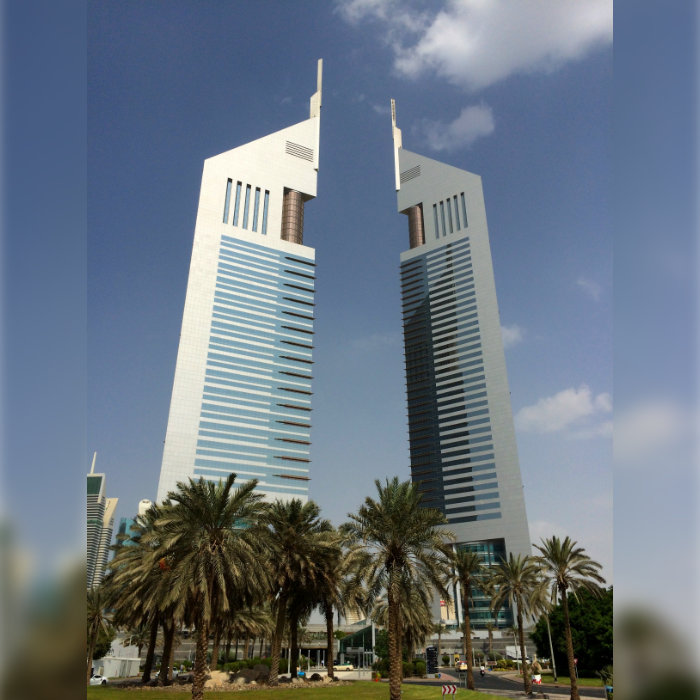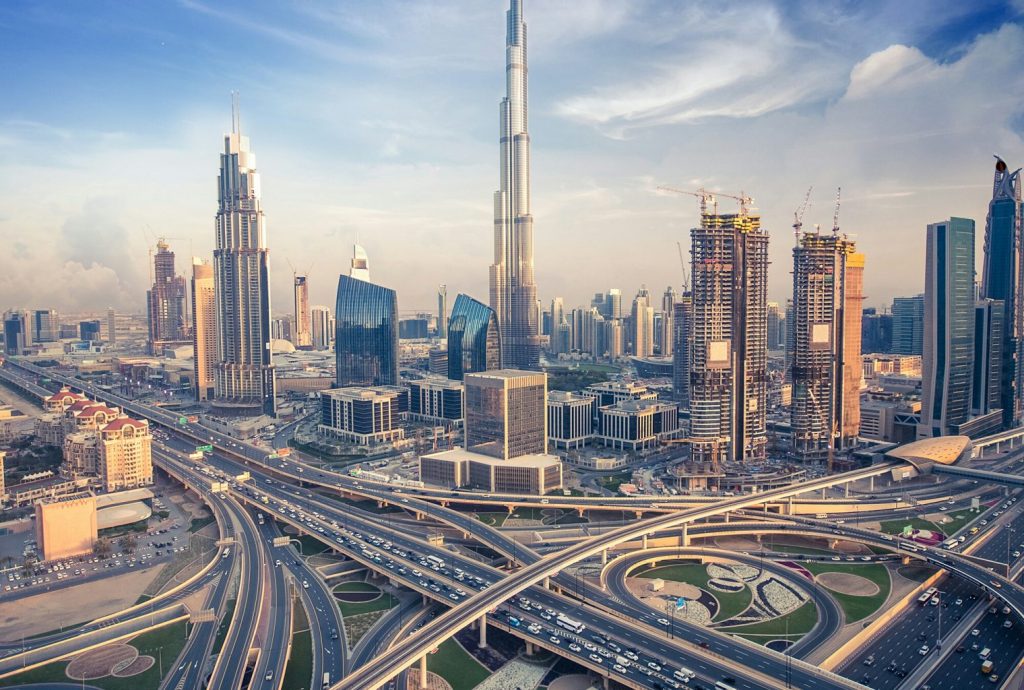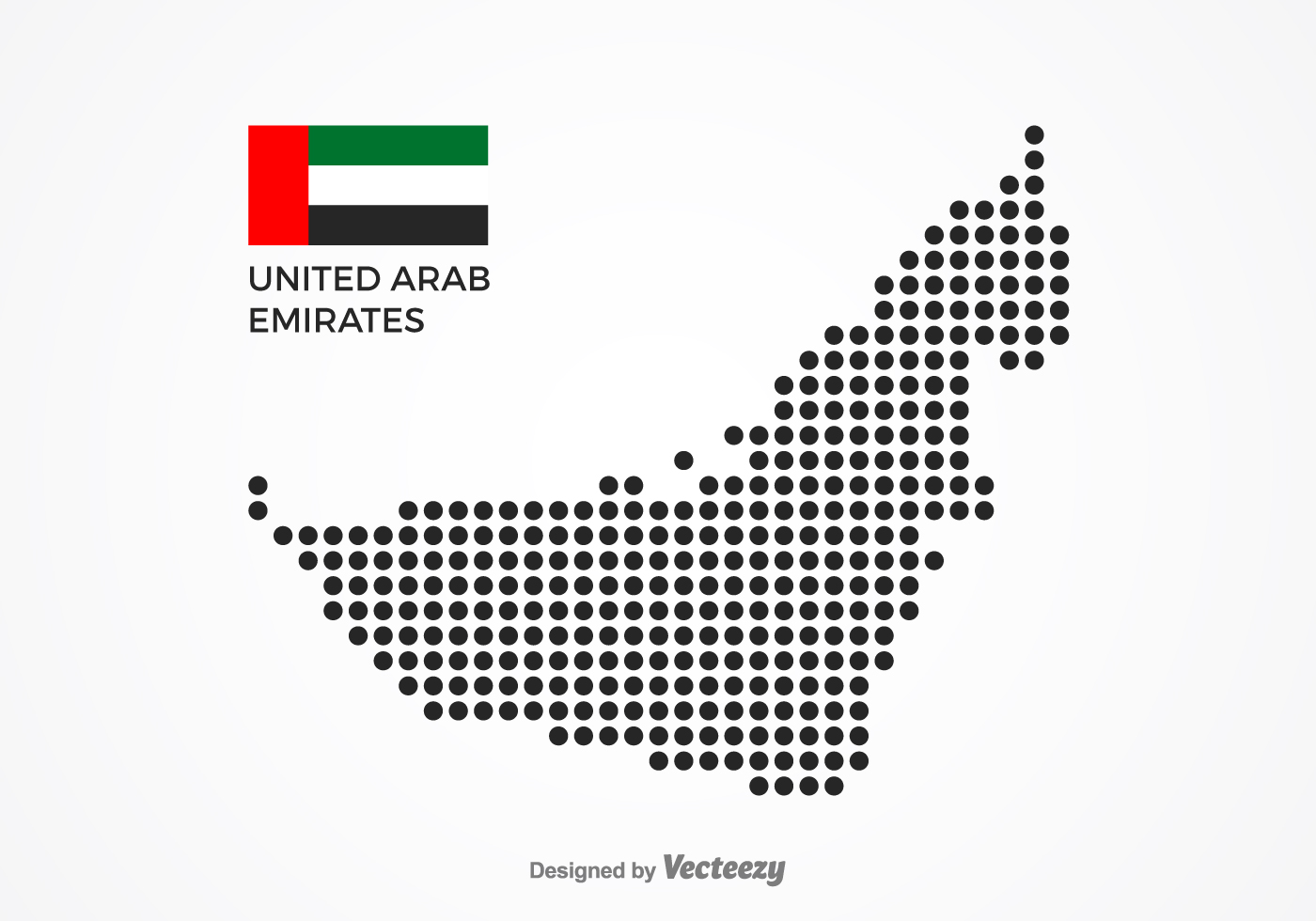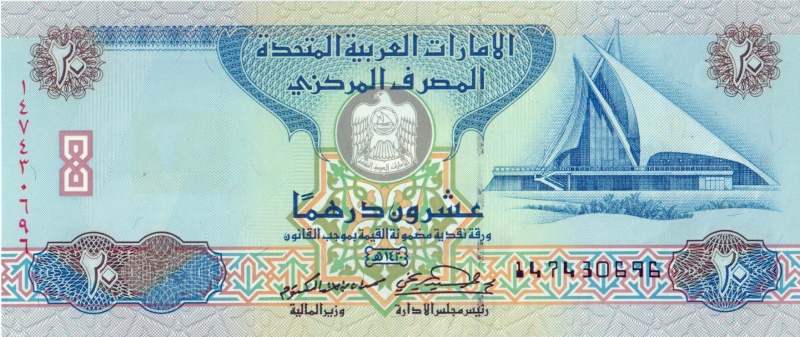The architecture of the capital of Emirates Sharjah contrasts sharply with the architecture of Abu Dhabi and Dubai. There are about 600 mosques in the city, and they continue to build. The only mosque in Sharjah, available for visiting tourists, is the al-Nur mosque. But the Museum of Islamic Civilization you can visit on any day of the week, except Friday. It has a rich collection of spiritual literature, items of Islamic art and crafts of the XVII-XIX centuries. Women will be interested in admiring jewelry created in different epochsAnd men - to inspect a wonderful collection of weapons.
Curious tourists did not attend the Archaeological Museum of Sharjah, where you can get acquainted with the history of the region, ranging from those times when he was inhabited by primitive communities. No less interesting Art Museum With a delightful interior, which can be called the work of art. The museum is one of the largest art gallery in the UAE and in the Middle East.
What Are The 7 Uae States Most of the artistic exposition - the works of the artists-Orientalists of the XVIII century. The United Arab Emirates is a country that is made up of seven emirates. Those are Abu Dhabi, Dubai, Sharjah, Ajman, Fujairah, Ras al-Khaimah, and Umm al-Qaiwain.
While the country as a whole has a prime minister and federal president, each emirate has its own ruler that oversees the local governments. The UAE was established in 1971, and since that time, it has seen great population growth. Its largest city is Dubai, which has reached the one million resident milestone with a population of 1.1 million. This is the only city with a population exceeding one million. However, there are other cities within the UAE that have high population counts.
The second most populous city, Abu Dhabi, has over 600,000 residents. There are four additional cities with populations that have surpassed 100,000. Seven cities have populations that are between 10,000 and 100,000, while remaining cities and towns make up the remainder of the population. The waters of the UAE, although definitely more cloudy in recent years due to heavy coastal construction, are still, for those from less torrid climes, remarkably warm, clean, and beautiful. There are long stretches of white-sand beaches, ranging from completely undeveloped to highly touristed .
The snorkeling and diving can be magnificent, especially along the eastern coast. Vast swaths of desert stretch to the south of the major urban areas, offering dramatic views and terrifying rides in fast-driven safaris. The mountains are dramatic, steep rocky crags, and a visit to them is well rewarded with amazing views.
Women wearing bathing suits will draw unwanted attention at the public beaches; it is advisable to pay for a one-day entry pass to a private beach at a hotel. Population estimates of the country in 2000 ranged from 2.6 to nearly 3 million. It serves as the financial, transportation, and communications center of a major petroleum-producing area. Abu Dhabi also has a large port and is home to federal government ministries and embassies. Dubai is the main trading center of the entire Gulf, has the principal port facilities of the UAE as well as its busiest airport, and has several large commercial enterprises.
Ras al-Khaimah is situated to the northern part of the UAE, bordering part of Oman's territory, the Musandam. The population of this emirate is 205,000 people, and the Emirati citizens are the largest group. Ras al-Khaimah does not have any oil, and it has, therefore, focused on advancing its industrial sector.
The primary economic areas of Khaimah include real estate, tourism, building materials, service sector, and agriculture. The most recognized types of attraction in this emirate include shopping, nature, parks, water, and amusement parks. The capital city of this emirate is also referred to as Ras al-Khaimah and it is a home to most of the citizens of Ras al-Khaimah emirate. Despite being the smallest emirate, Ajman is the fourth most populous state in the UAE with about 258,000 people. The major tourist attractions in this area include cultural destinations, hotels, and shopping malls.
The city hosts the Ruler's office, several banks, and approximately fifty local and international retail shops. Ajman was founded in 1803 after Sheik Rashid bin Humaid Al Nuami conquered the coastal settlements. Apart from being the capital city, it is also the second largest emirate in the world with an approximate population of 1.6 million people. Abu Dhabi is classified as one of the wealthiest cities in the world with most of its revenue originating from petroleum products.
This emirate accounts for approximately two-thirds of the UAE economy. Unlike Dubai which is more Westernized, Abu Dhabi is more into cultural traditions. Dubai is the most populous and the largest emirate in the UAE with approximately 2,502,715 people. Notably, it is the most progressive emirate among the seven emirates. Dubai is classified as an alpha city due to its strong economy.
Despite being a desert, the country has managed to utilize its resources and according to the 2015 statistics, it has an annual GDP of 105.6 billion USD. Unlike its neighboring emirates such as Abu Dhabi, the oil reserves of Dubai have been exhausted; oil contributes only 2 % of the total GDP of this emirate. Although it started as a port, Dubai has developed into a luxurious emirate that is home to the world's tallest building. The states gained autonomy following World War II (1939–45), when the trucial states of Bahrain and Qatar declared independent statehood. The rest were formally united in 1971, with the city of Abu Dhabi serving as the capital. The UAE has developed from a juxtaposition of Bedouin tribes to one of the world's most wealthy states in only about 50 years.
Between 2000 and 2018, average real gross domestic product growth was at close to 4%. It is the second largest economy in the GCC , with a nominal gross domestic product of US$414.2 billion, and a real GDP of 392.8 billion constant 2010 USD in 2018. Since its independence in 1971, the UAE's economy has grown by nearly 231 times to 1.45 trillion AED in 2013. The non-oil trade has grown to 1.2 trillion AED, a growth by around 28 times from 1981 to 2012. Nowadays the UAE is one of the world's richest countries, with GDP per capita almost 80% higher than OECD average.
The UAE coast stretches for nearly 650 km along the southern shore of the Persian Gulf, briefly interrupted by an isolated outcrop of the Sultanate of Oman. Six of the emirates are situated along the Persian Gulf, and the seventh, Fujairah is on the eastern coast of the peninsula with direct access to the Gulf of Oman. Most of the coast consists of salt pans that extend 8–10 km inland. The largest natural harbor is at Dubai, although other ports have been dredged at Abu Dhabi, Sharjah, and elsewhere. Numerous islands are found in the Persian Gulf, and the ownership of some of them has been the subject of international disputes with both Iran and Qatar. The smaller islands, as well as many coral reefs and shifting sandbars, are a menace to navigation.
Strong tides and occasional windstorms further complicate ship movements near the shore. The UAE also has a stretch of the Al Bāţinah coast of the Gulf of Oman. The Musandam Peninsula, the very tip of Arabia by the Strait of Hormuz, and Madha are exclaves of Oman separated by the UAE.
The UAE lies between 22°30' and 26°10' north latitude and between 51° and 56°25′ east longitude. It shares a 530-kilometre border with Saudi Arabia on the west, south, and southeast, and a 450-kilometre border with Oman on the southeast and northeast. The land border with Qatar in the Khawr al Udayd area is about nineteen kilometres in the northwest; however, it is a source of ongoing dispute.
Following Britain's military departure from the UAE in 1971, and its establishment as a new state, the UAE laid claim to islands resulting in disputes with Iran that remain unresolved. The UAE also disputes claim on other islands against the neighboring state of Qatar. The largest emirate, Abu Dhabi, accounts for 87% of the UAE's total area (67,340 square kilometres ). Human occupation has been traced back to the emergence of anatomically modern humans from Africa some 124,000 BCE through finds at the Faya-2 site in Mleiha, Sharjah. Burial sites dating back to the Neolithic Age and the Bronze Age include the oldest known such inland site at Jebel Buhais.
Known as Magan to the Sumerians, the area was home to a prosperous Bronze Age trading culture during the Umm Al Nar period which traded between the Indus Valley, Bahrain and Mesopotamia as well as Iran, Bactria and the Levant. The ensuing Wadi Suq period and three Iron Ages saw the emergence of nomadism as well as the development of water management and irrigation systems supporting human settlement in both the coast and interior. The Islamic age of the UAE dates back to the expulsion of the Sasanians and the subsequent Battle of Dibba. The UAE' history of trade led to the emergence of Julfar, in the present-day emirate of Ras Al Khaimah, as a regional trading and maritime hub in the area.
The maritime dominance of the Persian Gulf by Emirati traders led to conflicts with European powers, including the Portuguese Empire and the British Empire. The smallest Emirate of the United Arab Emirates is located on the coast of the Persian Gulf on the strip of a length of 16 km, between Umm-El Caivein and Chard. It is this snow-white, like flour, a sandy band is one of the few objects of interest to tourists. Emirate's authorities, dreaming of a large flow of guests, are developing a variety of attractive projects, but so far only one of them brought some fruits.
We are talking about a local store "Hole In The Wall" ("Break in the Wall"), where you can buy any alcoholic drink of foreign production without restrictions. Very often visiting tourists and guest workers from other emirates, not paying attention to the law, which prohibits alcohol from Ajman. You will be able to learn about the wonders of the underwater world, engaged in diving in coral reefs or, sedated camel, go to the desert to feel her hot breath. In the United Arab Emirates, curious travelers will find ancient architectural monuments and curious museums. For tourists who prefer active rest, tennis courts, golf courses, football sites, the opportunity to do horse riding, archery, water sports, including extreme.
Passionate shopping lovers should be reminded that the UAE is the best place on the planet for this exciting classes. Brief informationThe tourist industry in the emirates due to oil found in huge quantities in the coastal waters of this state develops rapidly. Oil allows you to build Emiram UAE Luxury hotels with excellent infrastructure. With a total population of 68,000 people, Umm al-Quwain is the least populous state in the UAE. Unlike the other emirates, Quwain has not made any findings of oil products or gas. Therefore, its economy majorly relies on revenue collected from hotels, tourism, and parks.
The United Arab Emirates , often referred to as the U.A.E, is a federation of seven emirates on the eastern side of the Arabian peninsula, at the entrance to the Persian Gulf. It is a country rich in history and culture and an easy starting point for travels in the Middle East. As impressive as economic growth has been in the UAE, the total population has increased from just around 550,000 in 1975 to close to 10 million in 2018. This growth is mainly due to the influx of foreign workers into the country, making the national population a minority.
The UAE features a unique labour market system, in which residence in the UAE is conditional on stringent visa rules. This system is a major advantage in terms of macroeconomic stability, as labour supply adjusts quickly to demand throughout economic business cycles. Abu Dhabi has an area of 67,340 square kilometres , which is 86.7% of the country's total area, excluding the islands. It has a coastline extending for more than 400 km and is divided for administrative purposes into three major regions. The Emirate of Dubai extends along the Persian Gulf coast of the UAE for approximately 72 km . Dubai has an area of 3,885 square kilometres , which is equivalent to 5% of the country's total area, excluding the islands.
The Emirate of Sharjah extends along approximately 16 km of the UAE's Persian Gulf coastline and for more than 80 km into the interior. The northern emirates which include Fujairah, Ajman, Ras al-Khaimah, and Umm al-Qaiwain all have a total area of 3,881 square kilometres . One is jointly controlled by Oman and Ajman, the other by Fujairah and Sharjah.
And here there is a unique water park "Ice Land", the pride of the Emirate, where, in addition to tourists, residents come out from all over the country. In the style of the park, located in the capital of the Emirate, the city of Ras-El Khaima, - fantasies on the topic of the ice age. His talented design, indeed, creates the impression that you are for the polar circle, and surrounded by penguins, seals, polar bears you will be happy to spend time entertaining on water attractions.
Entrance to the water park dirhams for an adult, 110 dirhams - for a child. Harmoniously combining the traditions of the East and the West, the United Arab Emirates managed to pronounce the past and modernity. In the toponymic emirates you can meet geographical namesreflecting the history of the country's settlement in the middle of the 18th century by Yemen tribes.
Three arid years in a row, cross wars due to sources and pastures, epidemics of plague and cholera caused a migration of tribes from various parts of the peninsula on the bay coast. The ancestors of the inhabitants of Kuwait, Bahrain, Qatar and Emirates settled on the desert at that time the coast. Yesterday's Bedouins became the "Marine Arabs" - fishermen, sailors, pearls and shipboards. Tourists from Europe may be surprised that alcoholic beverages are prohibited in restaurants located in the city. Note that the United Arab Emirates is a country in which the dry law is valid. It is therefore necessary to consider that only hotel establishments can be carried out by alcohol.
However, if you do not bother a dry law, we advise you to immerse yourself in local life and visit the most popular institutions of the capital. European intervention in the area began with the Portuguese in the early sixteenth century. From the mid-seventeenth century the British and Dutch competed for domination, with Britain coming out on top. By about 1800, the Qawasim, the ruling clans of Sharjah and Ras al Khaymah today, had become a maritime power in the lower gulf, attacking ships from British-ruled India. By 1892 the British had taken over the states' foreign relations and external security and the states remained under British protection until 1971. The United Arab Emirates is a federation of seven independent states located in the southeastern corner of the Arabian Peninsula.
The politics of the region includes differences in geographical names. The "Persian" or "Arabian Gulf" borders the region to the north, Saudi Arabia to the south and west, and Oman to the east. Before the discovery of oil in the 1950s, the UAE was a group of low-income emirates under the protection of the British. Oil brought rapid growth and modernization to the area, and these small states became independent as the UAE in 1971. Social development efforts, most particularly the nurturing of the country's citizens or "human capital," have been a priority of the UAE government since the early years of the federation. Immense resources have been applied to provide modern social and economic development infrastructure in education, health, and social welfare.
Just 14% live in rural areas and towns, while the remaining 86% live in the urbanized cities within the seven emirates. The UAE has seen a steady pattern of growth through the years, which is expected to slow down in the near future. Some experts also anticipate that the economy will be slowing down. Only time will tell how the growth of these major cities and the population that resides within them will change in the future. Islam is the official religion and Arabic is the official language.



























No comments:
Post a Comment
Note: Only a member of this blog may post a comment.